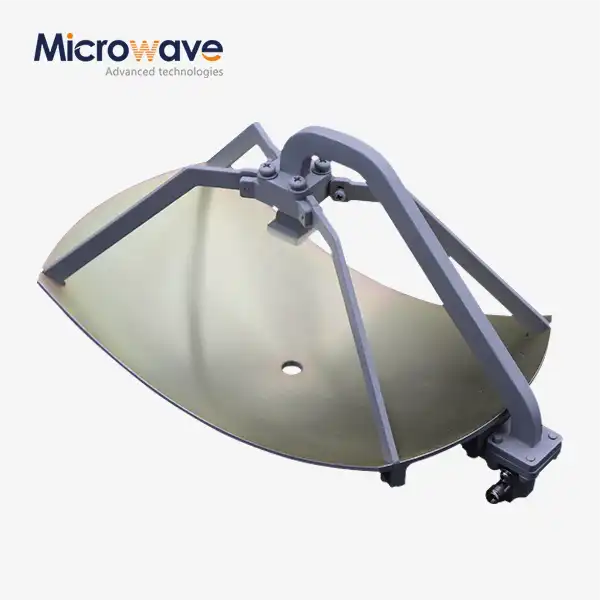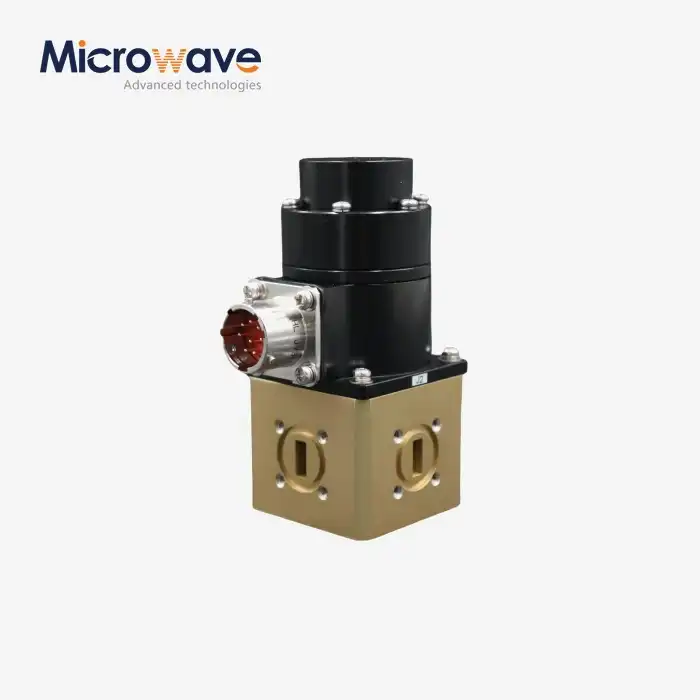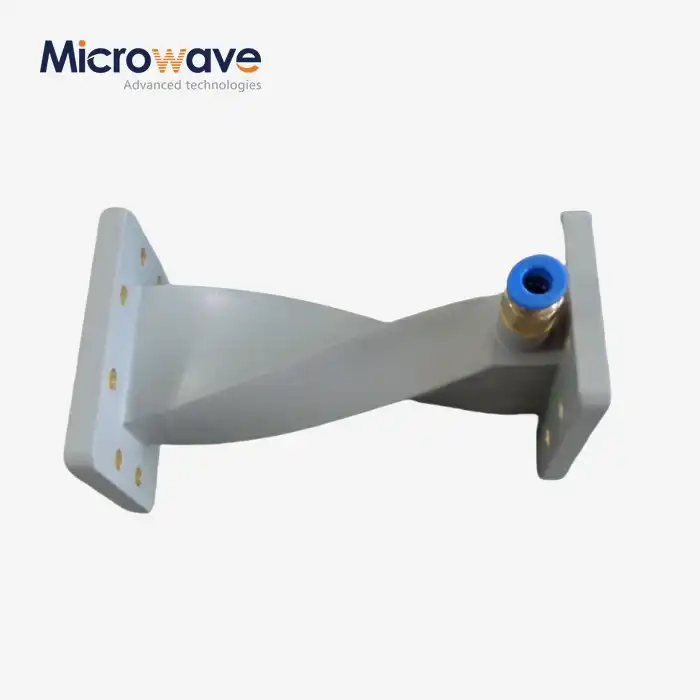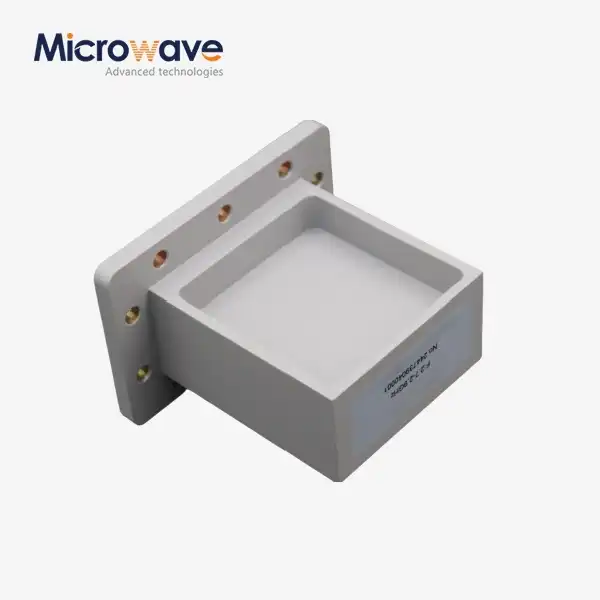Ladder Membrane Conical Dual Circular Polarization Horn Antenna vs. Linear Polarization: What Buyers Need to Understand
In satellite ground stations and radar installations worldwide, signal degradation from polarization misalignment costs operators thousands in lost data throughput daily. When choosing between circular and linear polarization technologies, understanding the fundamental differences between a Ladder Membrane Conical Dual Circular Polarization Horn Antenna and traditional linear solutions directly impacts system reliability, interference resistance, and long-term operational costs. This comprehensive guide breaks down critical technical distinctions that procurement teams, system engineers, and project managers must evaluate before committing to antenna infrastructure investments.
Understanding Polarization Fundamentals in Horn Antenna Technology
Polarization represents the orientation of electromagnetic waves as they propagate through space, fundamentally determining how signals interact with receiving antennas. In microwave and millimeter-wave communications, polarization choice dramatically affects signal integrity, especially in challenging environmental conditions. Linear polarization, where electric field oscillations occur along a single plane (horizontal or vertical), has served as the traditional standard for many communication systems. However, this approach carries inherent vulnerabilities when signals encounter atmospheric disturbances, physical obstructions, or multi-path propagation environments. The Ladder Membrane Conical Dual Circular Polarization Horn Antenna employs an entirely different electromagnetic approach. By utilizing dual circular polarization, this antenna generates electromagnetic waves that rotate in helical patterns as they travel through space, creating right-hand circular polarization (RHCP) and left-hand circular polarization (LHCP) simultaneously. This rotation mechanism provides substantial advantages in real-world operating conditions. When satellite signals pass through the ionosphere or encounter rain fade conditions, linear polarization signals experience significant attenuation and phase distortion. Circular polarization maintains signal integrity because the rotating field vector compensates for polarization rotation effects automatically. Advanced Microwave Technologies offers a double circular polarized conical horn antenna that adopts the design of a double port feeder ladder membrane type conical horn to form a double circular polarized antenna. This specialized ladder membrane structure, integrated within the conical horn geometry, functions as a precision polarization converter. The membrane elements are carefully dimensioned and positioned to transform the linearly polarized waveguide mode into circular polarization with exceptional axial ratio performance. Operating across frequencies from 1 GHz to 40 GHz, the Ladder Membrane Conical Dual Circular Polarization Horn Antenna delivers consistent performance characteristics that linear polarized alternatives simply cannot match in demanding applications.
Technical Performance Comparison: Circular vs. Linear Polarization Systems
When evaluating antenna performance metrics, several critical parameters differentiate circular and linear polarization implementations. The Ladder Membrane Conical Dual Circular Polarization Horn Antenna achieves superior cross-polarization discrimination compared to standard linear horn antennas, particularly crucial in satellite communication links where channel isolation determines system capacity. Linear polarization systems typically provide 25-30 dB cross-polarization isolation under ideal conditions, whereas properly designed circular polarization antennas like the Ladder Membrane Conical Dual Circular Polarization Horn Antenna maintain 35-40 dB isolation across their operating bandwidth. Axial ratio performance serves as the defining quality metric for circular polarization antennas. The Ladder Membrane Conical Dual Circular Polarization Horn Antenna maintains axial ratio values below 1.5 dB across its operational bandwidth, indicating that the antenna generates nearly perfect circular polarization. This exceptional axial ratio performance stems from the precision-engineered ladder membrane structure within the conical horn throat. By contrast, attempts to retrofit linear horn antennas with external polarizers typically result in axial ratio degradation, especially at band edges, compromising link performance during critical operations. Voltage Standing Wave Ratio (VSWR) represents another crucial performance indicator. The Ladder Membrane Conical Dual Circular Polarization Horn Antenna achieves VSWR less than 1.5:1 across its specified frequency range, ensuring efficient power transfer with minimal reflection losses. Linear polarized horn antennas may achieve similar VSWR performance in their primary polarization, but when systems require dual-polarization capability, linear implementations necessitate complex orthomode transducers or dual-feed networks that introduce additional losses and potential failure points. The integrated dual-port design of the Ladder Membrane Conical Dual Circular Polarization Horn Antenna eliminates these complications while maintaining compact form factors.
Radiation Pattern Characteristics and Beamwidth Considerations
Radiation pattern purity significantly influences system performance in crowded spectrum environments. The conical geometry of the Ladder Membrane Conical Dual Circular Polarization Horn Antenna produces symmetrical radiation patterns with controlled beamwidth ranging from 30 to 60 degrees, depending on frequency and aperture dimensions. This symmetry proves particularly valuable in tracking applications where antenna orientation changes continuously. Linear polarized pyramidal horn antennas exhibit asymmetric patterns due to their rectangular apertures, creating beamwidth differences between E-plane and H-plane that complicate pointing accuracy calculations and reduce coverage uniformity. Side lobe performance directly impacts interference rejection capability in multi-user environments. The Ladder Membrane Conical Dual Circular Polarization Horn Antenna achieves side lobe levels typically 20-25 dB below the main beam, effectively minimizing interference from adjacent satellites or terrestrial sources. The smooth aperture distribution of the conical design, combined with the circular polarization characteristics, naturally suppresses side lobe radiation compared to linear polarized alternatives. In defense and aerospace applications where electronic countermeasure resistance is paramount, this superior side lobe performance provides crucial operational advantages. Gain performance across the operational bandwidth demonstrates the Ladder Membrane Conical Dual Circular Polarization Horn Antenna's versatility. With gain ranging from 10 to 20 dB depending on frequency and physical aperture size, these antennas deliver reliable link budgets for satellite ground terminals, radar systems, and telecommunications infrastructure. The broadband capabilities spanning 1 GHz to 40 GHz enable single-antenna solutions for multi-frequency operations, reducing system complexity and installation costs compared to deploying multiple linear polarized antennas for different frequency bands.
Application-Specific Advantages in Real-World Deployments
Satellite communications represent the primary application domain where Ladder Membrane Conical Dual Circular Polarization Horn Antenna technology demonstrates decisive advantages over linear alternatives. In commercial VSAT terminals serving maritime vessels or aircraft, platform motion causes continuous antenna orientation changes relative to the satellite. Linear polarized antennas suffer polarization mismatch losses as the platform rolls or pitches, potentially dropping the communication link during critical operations. The Ladder Membrane Conical Dual Circular Polarization Horn Antenna maintains consistent link quality regardless of platform attitude because circular polarization remains invariant to antenna rotation around the propagation axis. Weather radar systems operating in X-band and Ku-band frequencies increasingly adopt circular polarization to improve target detection and classification capabilities. The Ladder Membrane Conical Dual Circular Polarization Horn Antenna enables polarimetric radar techniques that extract additional information about precipitation types, helping meteorologists distinguish between rain, snow, and hail. Linear polarization radars cannot access these advanced capabilities without deploying dual-antenna configurations that increase system cost and complexity. Furthermore, circular polarization reduces ground clutter returns in weather radar applications, improving low-altitude target detection that linear systems struggle to achieve. Defense surveillance and tracking installations demand antenna performance that maintains reliability across extreme environmental conditions and in the presence of intentional interference. The Ladder Membrane Conical Dual Circular Polarization Horn Antenna withstands harsh environments thanks to its robust high-performance die-cast aluminum construction, while the circular polarization characteristic provides inherent resistance to certain jamming techniques. Military systems requiring secure communications benefit from the reduced vulnerability to polarization-dependent interception that circular polarization provides compared to predictable linear polarized transmissions.
Telecommunications Infrastructure and 5G Integration
Modern telecommunications base stations increasingly leverage millimeter-wave frequencies to deliver enhanced bandwidth for 5G and future 6G services. The Ladder Membrane Conical Dual Circular Polarization Horn Antenna supports these advanced networks by operating efficiently across the extended frequency range from 1 GHz through 40 GHz. In dense urban environments where multi-path propagation creates polarization distortion, circular polarization maintains signal quality that linear systems cannot match. The antenna's low VSWR and high gain characteristics ensure optimal power efficiency, critical consideration for remote installations powered by solar arrays or other limited energy sources. Point-to-point microwave backbone links connecting cellular tower sites traditionally employed linear polarized antennas due to their simplicity and lower cost. However, as link distances extend and terrain obstacles increase, circular polarization antennas like the Ladder Membrane Conical Dual Circular Polarization Horn Antenna provide superior fade margins. The ability to operate reliably during adverse weather conditions reduces service interruptions that frustrate subscribers and generate costly maintenance dispatches. Over the system lifecycle, these reliability improvements offset the initially higher procurement costs associated with advanced circular polarization technology. Research and development facilities conducting electromagnetic compatibility testing and antenna characterization measurements require reference antennas with precise, predictable performance. The Ladder Membrane Conical Dual Circular Polarization Horn Antenna serves this role excellently due to its calibrated radiation patterns, stable impedance characteristics, and minimal frequency-dependent variation. Testing laboratories equipped with these precision antennas can conduct accurate measurements across the full 1-40 GHz span without requiring antenna changes, accelerating test throughput and improving measurement repeatability compared to using multiple linear polarized reference antennas for different frequency segments.
Cost-Benefit Analysis and Long-Term Value Considerations
Initial procurement costs represent only one component of total antenna system ownership expenses. While Ladder Membrane Conical Dual Circular Polarization Horn Antenna units typically command higher purchase prices than equivalent linear polarized alternatives, comprehensive lifecycle analysis reveals compelling economic advantages. The dual circular polarization capability eliminates the need for polarization diversity systems that would require two separate linear antennas plus combining networks. Installation labor costs decrease substantially when deploying single antennas instead of dual-antenna arrays, and ongoing maintenance requirements reduce proportionally. System reliability directly impacts operational costs through reduced downtime and maintenance interventions. The Ladder Membrane Conical Dual Circular Polarization Horn Antenna's superior performance in adverse weather conditions translates to higher link availability percentages, crucial for applications where service level agreements impose financial penalties for outages. In remote installations where maintenance access is difficult and expensive, the enhanced reliability of circular polarization systems provides significant value. The robust construction using high-performance die-cast aluminum ensures mechanical stability and environmental durability that extend operational lifespans beyond typical linear horn alternatives. Flexibility for future system upgrades and expanded capabilities represents another important value consideration. The Ladder Membrane Conical Dual Circular Polarization Horn Antenna's broadband performance characteristics accommodate evolving communication standards and frequency allocation changes without requiring antenna replacement. Organizations can migrate from legacy systems to newer technologies while retaining their antenna infrastructure investment. Advanced Microwave Technologies Co., Ltd offers customization services that tailor antenna specifications to unique operational requirements, ensuring that systems incorporate appropriate frequency ranges, gain values, and connector configurations from initial deployment rather than requiring costly modifications later.
Performance Optimization Through Proper System Integration
Achieving optimal performance from Ladder Membrane Conical Dual Circular Polarization Horn Antenna installations requires attention to system-level integration factors beyond the antenna itself. Proper impedance matching throughout the RF chain ensures minimal insertion loss and maximizes power delivery efficiency. The antenna's 50-ohm impedance standard facilitates straightforward integration with commercial RF components, but careful attention to connector transitions and cable selection prevents performance degradation. N-Type and SMA connectors specified for these antennas provide reliable, low-loss connections that maintain signal integrity across the operating frequency range. Mounting and pointing accuracy significantly influence realized antenna performance, particularly in satellite communication applications where narrow beamwidths demand precise alignment. The lightweight yet durable construction of the Ladder Membrane Conical Dual Circular Polarization Horn Antenna simplifies installation on various mounting platforms, from fixed pedestals to mobile tracking systems. Proper grounding and weather sealing protect connector interfaces from moisture ingress and corrosion that would degrade electrical performance over time. Advanced Microwave Technologies provides detailed installation documentation and technical support to ensure that customers achieve specification-compliant performance from their antenna deployments. Testing and commissioning procedures verify that installed Ladder Membrane Conical Dual Circular Polarization Horn Antenna systems meet performance expectations before entering operational service. Advanced Microwave Technologies' 24-meter microwave darkroom facility, equipped with Antenna Plane Near and Far Field Measuring Recombination Chamber technology, ensures that every manufactured antenna undergoes rigorous characterization across its specified frequency range. This comprehensive testing approach, covering frequencies from 0.5 to 110 GHz, provides customers with confidence that their antennas will perform as specified when deployed in field conditions.
Making the Right Choice: Decision Framework for Buyers
Selecting between Ladder Membrane Conical Dual Circular Polarization Horn Antenna technology and traditional linear polarization solutions requires systematic evaluation of application-specific requirements against technical capabilities and economic factors. Organizations operating satellite ground terminals, weather radar systems, defense surveillance platforms, or telecommunications infrastructure should prioritize circular polarization when link reliability under adverse conditions outweighs initial cost considerations. The superior performance in rain fade, multi-path environments, and platform motion scenarios justifies the technology investment for mission-critical applications. Frequency band requirements significantly influence antenna selection decisions. The Ladder Membrane Conical Dual Circular Polarization Horn Antenna's capability to span 1 GHz through 40 GHz makes it particularly suitable for multi-band operations that would otherwise require multiple antenna installations. Projects involving X-band, Ku-band, or Ka-band frequencies benefit especially from circular polarization advantages at these higher frequencies where atmospheric attenuation effects become more pronounced. System designers should evaluate whether their applications require operation across multiple frequency bands simultaneously or sequentially, as this capability directly impacts the economic case for broadband circular polarization antennas. Environmental operating conditions present another critical decision factor. Installations in tropical regions with frequent severe weather, maritime environments with salt spray exposure, or arctic locations with extreme temperature variations demand antenna systems engineered for reliability under stress. The Ladder Membrane Conical Dual Circular Polarization Horn Antenna's high-performance die-cast aluminum construction and robust circular polarization performance provide advantages in these challenging environments. Organizations should conduct thorough environmental assessments and compare expected performance degradation for circular versus linear options under site-specific conditions before finalizing procurement decisions.
Conclusion
Understanding the technical distinctions between Ladder Membrane Conical Dual Circular Polarization Horn Antenna and linear polarization systems empowers informed procurement decisions that align antenna technology with operational requirements and budget constraints.
Cooperate with Advanced Microwave Technologies Co., Ltd.
Advanced Microwave Technologies Co., Ltd stands as a leading China Ladder Membrane Conical Dual Circular Polarization Horn Antenna manufacturer with over 20 years of microwave technology expertise. As a trusted China Ladder Membrane Conical Dual Circular Polarization Horn Antenna supplier, we operate state-of-the-art facilities including our remarkable 24-meter Microwave Darkroom with testing capabilities spanning 0.5-110 GHz. Our China Ladder Membrane Conical Dual Circular Polarization Horn Antenna factory holds ISO 9001:2015, ISO 14001:2015, and ISO 45001:2018 certifications, ensuring quality excellence. Whether you need China Ladder Membrane Conical Dual Circular Polarization Horn Antenna wholesale solutions or individual units, we offer competitive Ladder Membrane Conical Dual Circular Polarization Horn Antenna price points with High Quality Ladder Membrane Conical Dual Circular Polarization Horn Antenna performance. With Ladder Membrane Conical Dual Circular Polarization Horn Antenna for sale globally, our OEM services customize frequency ranges, polarization types, materials, and dimensions to your specifications. Contact our expert team at craig@admicrowave.com to discuss your project requirements, request technical specifications, or obtain quotations. Save this page for reference when evaluating antenna solutions for your satellite communications, defense, aerospace, or telecommunications applications.
References
1. Balanis, Constantine A. "Antenna Theory: Analysis and Design." Fourth Edition. John Wiley & Sons, 2016.
2. Milligan, Thomas A. "Modern Antenna Design." Second Edition. IEEE Press, 2005.
3. Stutzman, Warren L. and Gary A. Thiele. "Antenna Theory and Design." Third Edition. John Wiley & Sons, 2012.
4. IEEE Standards Association. "IEEE Standard for Definitions of Terms for Antennas." IEEE Std 145-2013. Institute of Electrical and Electronics Engineers, 2014.












